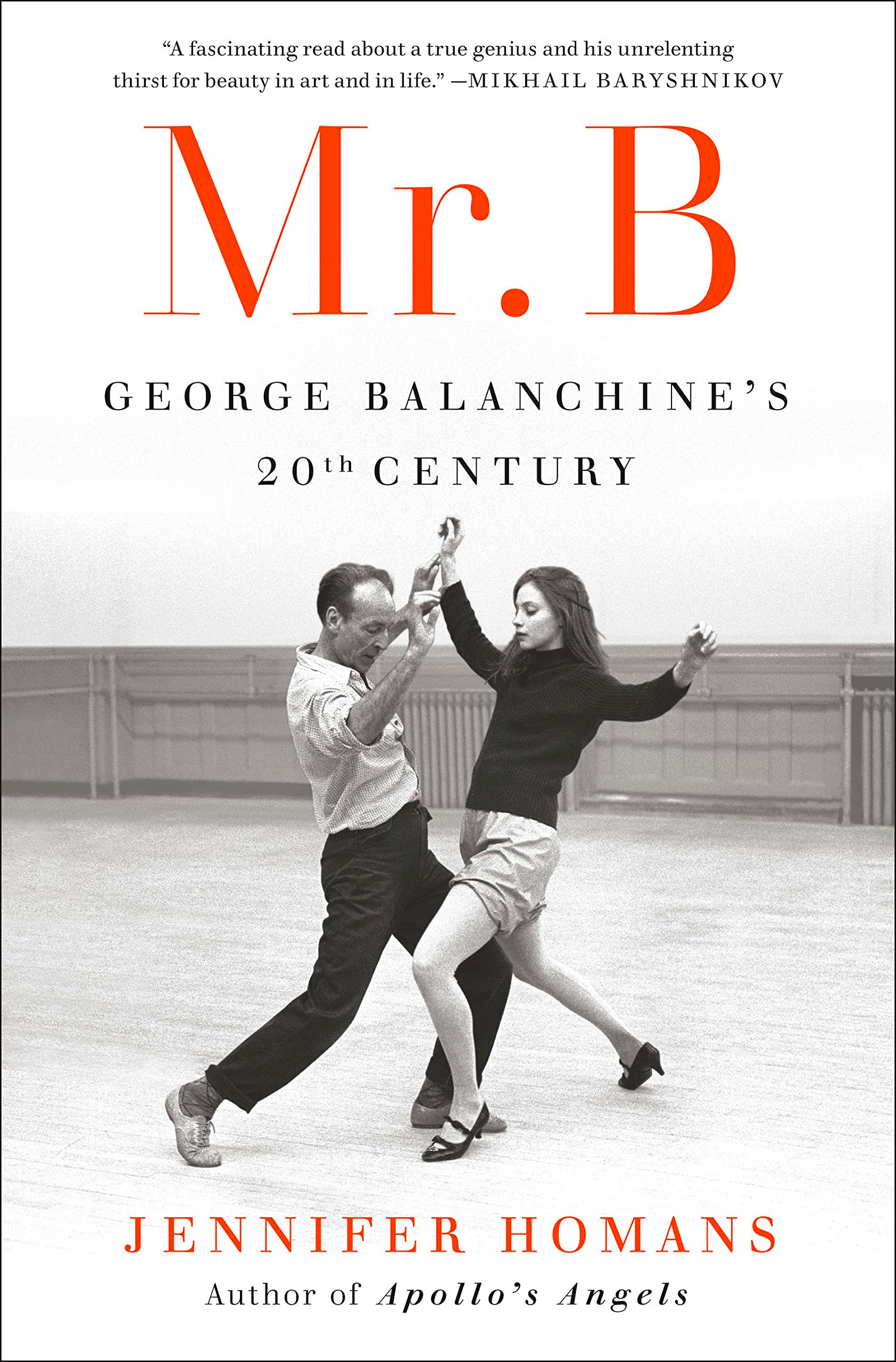“Dancers do not work from texts because there are no texts,” Jennifer Homans writes in her resplendent biography, Mr. B: George Balanchine’s 20th Century (Random House). “Dances are passed… from one dancer’s body to another.” Taking a cue from her subject’s chosen discipline, Homans assembles a text that conveys the influential George Balanchine as a body in time and space. Like his celebrated choreography, Balanchine’s life often ran in syncopation with the rhythm of the 20th century, disrupting dance traditions to create new forms. Homans, a former professional dancer, illuminates her subject like his dancers, “without shadows or dim corners so that every curve, line, bone, ligament of the body [is] X-ray visible… a paradoxical combination of unreal and hyperreal.” Mr. B is a comprehensive, eminently readable history of mortal and metaphysical man.
The Georgian-born Balanchine, who called himself a “cloud in trousers,” trained at Russia’s Imperial Theater School before traveling throughout Europe and working with the preeminent artists of the time. Homans’s effort shows how many near misses worked in Balanchine’s favor so he could eventually cofound the School of American Ballet and the New York City Ballet.His ballets continue to be unmatched in the American canon, and they are protected by a meticulously managed trust. But what remains of Balanchine, who famously resisted attempts to pin down his story? Homans’ exhaustive international research looks beyond his carefully guarded and popular creations to yield a complex picture of the man who shaped the women he loved into divine icons. Homans resists easy conclusions, delineating instead the dichotomy of Balanchine’s imperfect reality and his ethereal reputation.
Mr. B tells a story in muscle, gesture, and sound. Homans centers her narrative around balletic description, translating the rigor and transcendence of the art: “Barocco is about time,” she writes. “Dancing it is nonstop math: numbers, rhythm, syncopation.” She describes his piece The Four Temperaments as a “clinical dissection of the human body.” Her illustration of Serenade, Balanchine’s first original ballet in America deciphers the gestural:
First, the wrist breaks—only the wrist…. It is a simple but profound gesture, amplified seventeen times…. [A]rms open and wide, palms up, chests and faces raised to the skies. Everything suspends for a moment over this spiritual image in the half-light.
This is Balanchine’s ballet story told by one who feels dance in her body. Homans’s euphonic, knowing sentences make for a pleasurable read.
Mr. B balances Balanchine’s glorious reputation with his fickle obsessions and failings. Here is an imperfect being who is responsible for altering the timeline of human history. “Should we say that [his dancers] were less servants of God than vassals of his art?” Homans asks, reminding us of the toll he exacted. “Should we say that the higher purpose they all spoke of was just a grandiose ego masquerading as art?” She proves with certainty that what matters is both the legend and the man.
Bravo.
Read more about Mr. B:
Moira Hodgson at The Wall Street Journal
Hamilton Cain at Oprah Daily
Dwight Garner at The New York Times
Starred Kirkus review
Starred Publishers Weekly review



